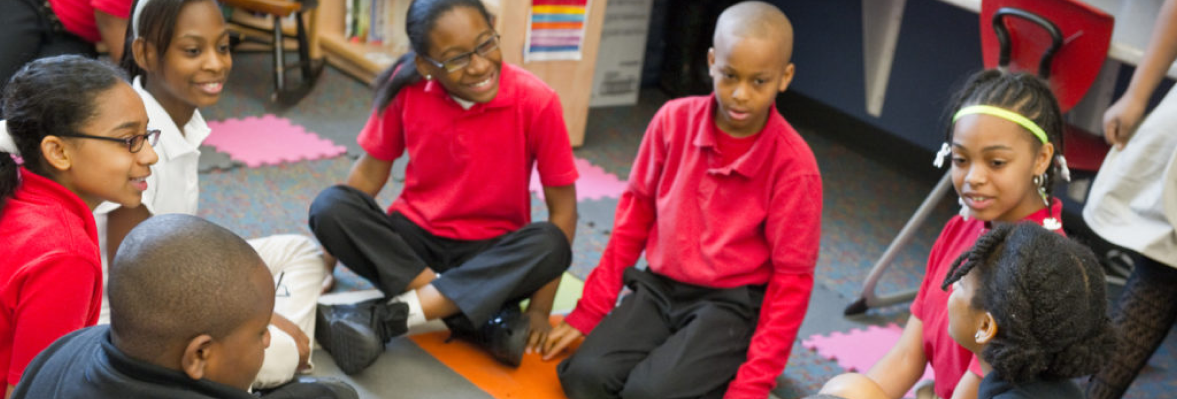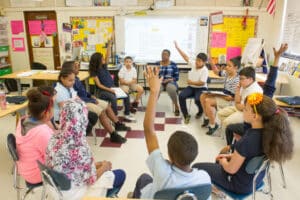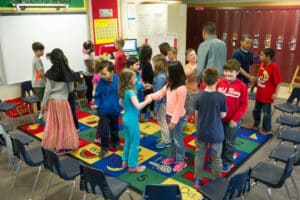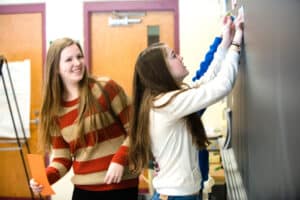Principles & Practices

The Responsive Classroom approach to teaching is comprised of a set of well-designed practices intended to create safe, joyful, and engaging classrooms and school communities. The emphasis is on helping students develop their academic, social, and emotional skills in a learning environment that is developmentally responsive to their strengths and needs.
Core Belief
In order to be successful in and out of school, students need to learn a set of social and emotional competencies—cooperation, assertiveness, responsibility, empathy, and self-control—and a set of academic competencies—academic mindset, perseverance, learning strategies, and academic behaviors.
Guiding Principles
The Responsive Classroom approach is informed by the work of educational theorists and the experiences of exemplary classroom teachers. Six principles guide this approach:
Principle 1
Teaching social and emotional skills is as important as teaching academic content.
Principle 2
How we teach is as important as what we teach.
Principle 3
Great cognitive growth occurs through social interaction.
Principle 4
How we work together as adults to create a safe, joyful, and inclusive school environment is as important as our individual contribution or competence.
Principle 5
What we know and believe about our students—individually, culturally, developmentally—informs our expectations, reactions, and attitudes about those students.
Principle 6
Partnering with families—knowing them and valuing their contributions—is as important as knowing the children we teach.
Classroom Practices and Strategies
Responsive Classroom is an approach to teaching based on the belief that integrating academic and social-emotional skills creates an environment where students can do their best learning. The Responsive Classroom approach consists of a set of practices and strategies that build academic and social-emotional competencies. This approach works well with many other programs and can be introduced gradually into a teacher’s practice.
These core classroom practices are the heart of the Responsive Classroom approach:

Shared Practices (K–8)
Interactive Modeling
An explicit practice for teaching procedures and routines (such as those for entering and exiting the room) as well as academic and social skills (such as engaging with the text or giving and accepting feedback).
Teacher Language
The intentional use of language to enable students to engage in their learning and develop the academic, social, and emotional skills they need to be successful in and out of school.
Logical Consequences
A non-punitive response to misbehavior that allows teachers to set clear limits and students to fix and learn from their mistakes while maintaining their dignity.
Interactive Learning Structures
Purposeful activities that give students opportunities to engage with content in active (hands-on) and interactive (social) ways.

Elementary Practices (K–6)
Morning Meeting
Everyone in the classroom gathers in a circle for twenty to thirty minutes at the beginning of each school day and proceeds through four sequential components: greeting, sharing, group activity, and morning message.
Establishing Rules
Teacher and students work together to name individual goals for the year and establish rules that will help everyone reach those goals.
Energizers
Short, playful, whole-group activities that are used as breaks in lessons.
Quiet Time
A brief, purposeful and relaxed time of transition that takes place after lunch and recess, before the rest of the school day continues.
Closing Circle
A five- to ten-minute gathering at the end of the day that promotes reflection and celebration through participation in a brief activity or two.
Academic Choice
A way to structure lessons that provides students with teacher-guided choices in what to learn, how to learn, or both to engage students more deeply with academic work.
Guided Discovery
A teaching strategy for introducing classroom materials that guides students to explore potential uses and learn how to care for them.

Middle School (6-8)
Responsive Advisory Meeting
A predictable routine for building meaningful connections, developing respectful and trusting relationships, and meeting students’ developmental needs. There are four components: arrival welcome, announcements, acknowledgments, and activity.
Investing Students in the Rules
A four-step teacher-facilitated process: set SMART goals, connect the goals to rules, connect the rules to concrete behaviors, and bring the rules to life in everyday ways.
Brain Breaks
These short breaks, used during whole-class lessons or transitions, get students moving and interacting.
Active Teaching
An instructional delivery strategy in which the teacher presents, explains, illustrates, and demonstrates content to enable students to meet a learning objective. The three phases of active teaching are Teach and Model, Student Collaboration, and Facilitate Reflection.
Student Practice
A process that follows active teaching where students explore and practice, under the teacher’s guidance, the content and skills taught during a lesson.
Independent Practice
A structure that offers students voice and choice in what or how they learn.
Small Group Learning
A structured way for students to work together on a specific learning goal, assignment, or project that the teacher organizes.
